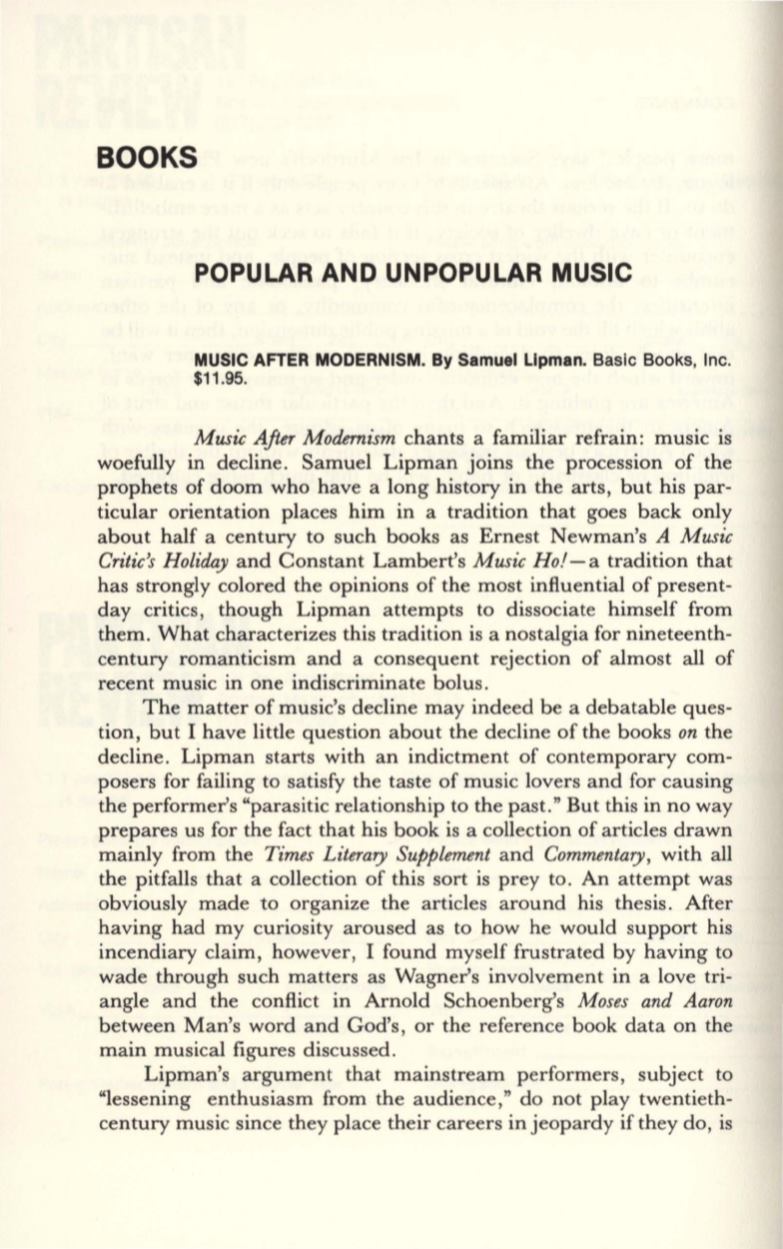
BOOKS
POPULAR AND UNPOPULAR MUSIC
MUSIC AFTER MODERNISM.
By
Samuel Lipman.
Basic Books, Inc.
$11.95.
Music After Modernism
chants a familiar refrain : mUSlC lS
woefully in decline. Samuel Lipman joins the procession of the
prophets of doom who have a long history in the arts, but his par–
ticular orientation places him in a tradition that goes back only
about half a century to such books as Ernest Newman's
A Music
Critic's Holiday
and Constant Lambert's
Music Ho/-a
tradition that
has strongly colored the opinions of the most influential of present–
day critics, though Lipman attempts to dissociate himself from
them. What characterizes this tradition is a nostalgia for nineteenth–
centu ry romanticism and a consequent rejection of almost all of
recent music in one indiscriminate bolus.
The matter of music's decline may indeed be a debatable ques–
tion, but I have little question about the decline of the books
on
the
decline . Lipman starts with an indictment of contemporary com–
posers for failing to satisfy the taste of music lovers and for causing
the performer's "parasitic relationship to the past. " But this in no way
prepares us for the fact that his book is a collection of articles drawn
mainly from the
Times L iterary Supplement
and
Commentary,
with all
the pitfalls that a collection of this sort is prey to . An attempt was
obviously made to organize the articles around his thesis. After
having had my curiosity aroused as to how he would support his
incendiary claim, however, I found myself frustrated by having to
wade through such matters as Wagner's involvement in a love tri–
angle and the conflict in Arnold Schoenberg's
Moses and Aaron
between Man's word and God's, or the reference book data on the
main musical figures discussed .
Lipman's argument that mainstream performers , subject to
"lessening enthusiasm from the audience," do not play twentieth–
century music since they place their careers in jeopardy if they do, is


